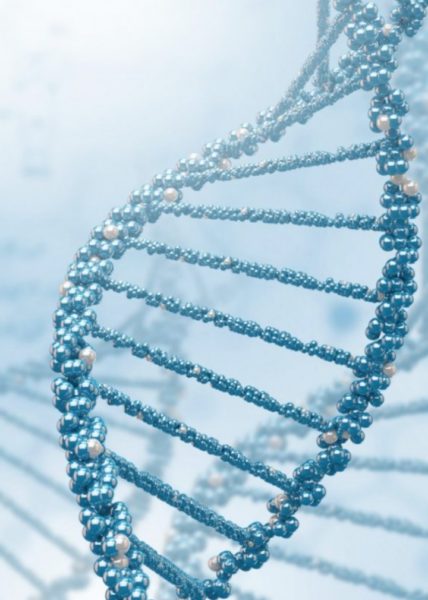What is PolG

PolG At A Glance
PolG disease is a genetic disorder that robs the body’s cells of energy, in turn causing progressive multiple organ dysfunction and failure. One might compare it to having a faulty battery that never fully recharges and is in a constant state of depletion. The disease is uncommon so no one knows how many patients there are. But PolG research could affect everything from Parkinson’s to cancer.
Mitochondria are the power plants of the cell, converting the food we eat into the kind of energy our bodies need to function. Besides being critical, one peculiarity of these organelles is that they contain their own DNA which, to replicate, requires an enzyme (polymerase γ; “POLG”) encoded in the host cell’s POLG and POLG2 genes. Mutations in those genes impair efficient replication of the mitochondria DNA, causing symptoms that can start from early childhood to adulthood. The symptoms, which can be mild to severe, most often include ophthalmoplegia, muscle weakness, epilepsy and liver failure. Because PolG disease causes such a wide range of symptoms and affects so many different organ systems, it is very difficult to diagnose and treat.
Once considered rare, mitochondrial diseases are now believed to affect one of every 5000 people worldwide, rendering it the second most commonly diagnosed, serious genetic disease (after cystic fibrosis). By supporting research specific to the mitochondrial dysfunction found in PolG mutations, we are also creating a body of knowledge that can inform the development of treatments and potential cures for a variety of other diseases, including Alzheimer's, Parkinson's, diabetes, heart diseases, depression, some cancers and aging in general. Thus, the outcome of this work will be wide-ranging and impactful beyond PolG.
For all patients with PolG disorders, the future is deeply uncertain. There are no effective treatments, let alone a cure that might save them. Every day they witness their own degeneration and progressive loss of function, a harrowing life experience.
Because PolG disease causes such a wide range of symptoms and affects so many different organ systems, it is very difficult to diagnose and treat.
The Science and Genetics of PolG
Mitochondria are often referred to as the power plants of the cell. These organelles are the intracellular sites, where most of the energy we take up as food is converted to the molecule adenosine triphosphate (ATP), the body’s energy carrier used to fuel a variety of body functions. Thus, while most cell types in the body contain mitochondria, they are particularly numerous in tissues of high energy demand and metabolic activity. A liver cell, for example, typically contains as many as 1000 – 2000 copies.
Mitochondria are surrounded by two membranes and contain their own genome. In humans, this mitochondrial DNA (mtDNA) is encoding for 13 essential proteins out of the approximately 1000 proteins necessary for mitochondrial function. All these other proteins are encoded in nuclear DNA within the cell nucleus, synthesized using the cellular protein synthesis machinery and translocated to the mitochondria to fulfill their various functions. Whereas the nuclear DNA is copied in every cell division, mitochondrial DNA is replicated within the mitochondria and redistributed constantly through fusion and separation of mitochondria. This replication of mitochondrial DNA happens independently from the cell cycle and is performed by the enzyme polymerase γ. Polymerase γ is encoded for in the cell nucleus by the two genes PolG as well as PolG2.
More than 200 mutations in PolG have been described that are associated with disease. Individually, or more often in combination, such mutations produce polymerase γ with impaired function, resulting in less efficient replication of mitochondrial DNA and thus in the accumulation of deletions within mtDNA as well as mtDNA depletion. This leads to mitochondrial dysfunction and ultimately to disease. Symptoms affect predominantly parts of the body that are particularly energy hungry (central nervous system, muscles, liver, etc.) and are very variable with respect to onset (from early childhood to adulthood) and severity (severe to mild) as well as very broad, ranging from epilepsy to liver failure, from ophthalmoplegia to muscle weakness. In fact, little is known about what exactly causes the clinical appearance of disease and what external factors contribute to the development of symptoms and their severity. To date, disease-modifying or curative therapies are unfortunately still lacking.
Contact Us
We would love to hear from you. Contact us here with questions or comments.
Research
The Foundation intends to become a leading funder of basic, translational, and clinical PolG research. Working with the global scientific community, we will help develop critical tools and make our findings widely available.
